No detail spared.
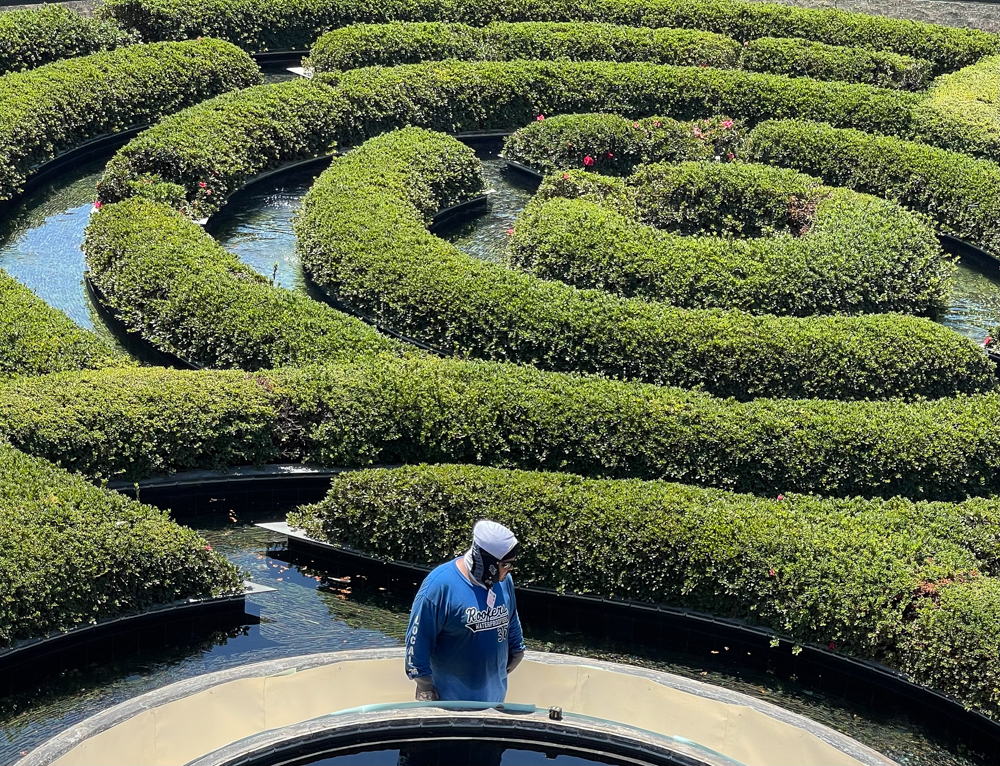
The landscaping is perfection itself.
iPhone 12 Pro Max.
No detail spared.

iPhone 12 Pro Max.
A Hollywood institution.
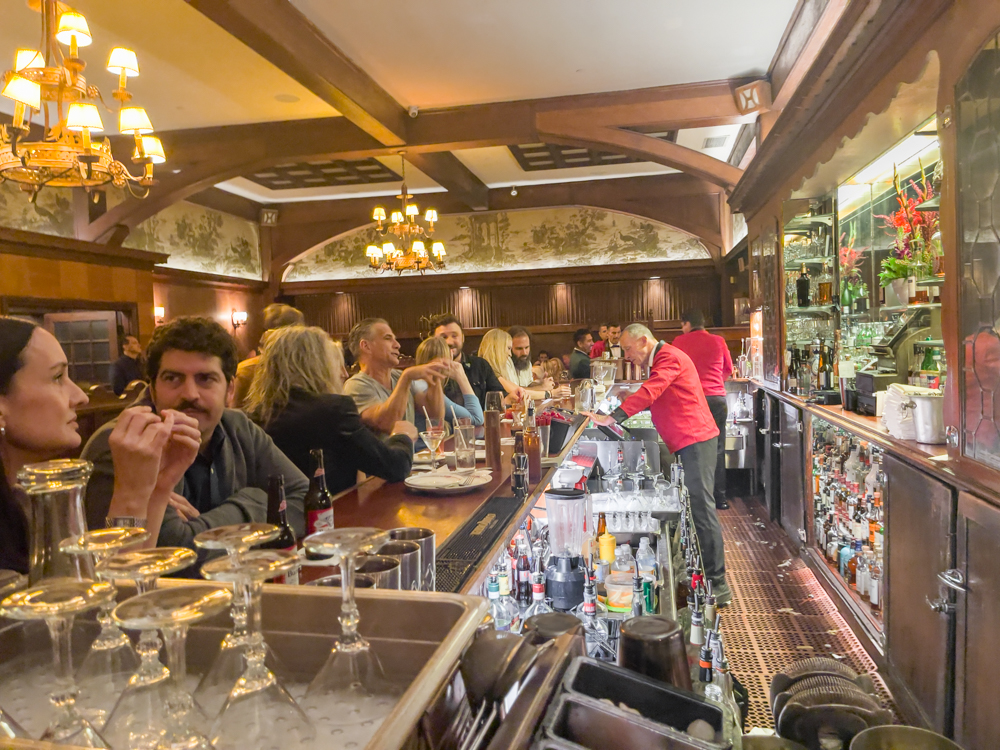
The bar scene here may not be quite up to Manet’s A bar at the Folies Bergère, but the atmosphere was positively electric when we dropped by this fabled eating spot for dinner. After stumbling along Hollywood Boulevard, that is, trying not to breathe what passes for air in that neighborhood.
Despite its 103 year old provenance and great fame, the food and service were excellent and we lucked out with a small banquette seat isolated from the non-mask wearing set. This being a Thursday I naturally chose the famous homemade chicken pot pie while Winston enjoyed a lovely trout.
If you want to see the glitterati and enjoy a good meal in Hollywood, Musso’s is it.
iPhone 12 Pro Max snap, some taming of the highlights in Photoshop.
Poached perfection.
This is one of an occasional series on cooking devices which make a difference. For an index of cooking articles on this blog click here.
I confess that this is a technique which it has taken me a couple of decades to master and the length of time is a direct function of my general resistance to kitchen gadgets. I greatly enjoy the physical aspects of cooking and prefer to use traditional hand tools – cleavers, knives, pounders and so on – tending to look askance at gadgets.
Now my many years of poaching failure have seen attempts at various techniques. I have done the swirling vortex hot water with vinegar bit. Abject failure. Wisps of ugly egg white everywhere with the egg, as often as not, looking like the victim of alopecia. Then I chanced on Nigella Lawson’s BBC cooking series. Well, actually, I chanced on staring at Nigella – which is why guys watch her show – so my attention to her detailed instructions may have been less than perfect, but she advocated draining the cracked egg in a small sieve, spraying lemon juice on it and then placing it gently, via a ramekin, in hot water, no vortex in sight. The result was much the same as the vortex method. The water clouds up, whites migrate to the surface and you cannot see what the heck is going on.
So I put the whole thing aside and decided that poaching was not going to be a winner for me.
However, I’m anything but a quitter, and recently came across this device:

Click the link for Amazon which will happily take some $33 of your money.
And disregard the one star reviews which say you will cut yourself on the edges of the stamped insert (you will not) or that the screws come out (they do not). These are likely posted by crooked competitors seeking a sales boost, and there are many devices like this at various prices and capacity (2, 4 or 6 eggs) to be had. This one is spendy but I have found it to be beautifully made, with the eggs being perfection itself. And you can always see the state of your eggs through the glass cover. I used two cups of water and you use the same amount whether poaching 1, 2, 3 or 4 eggs.
I swiped a generous layer of butter on the inside surfaces of the removable Teflon cups. Do not use olive oil. The eggs will stick after a couple of uses.
Once the water was simmering I gave the eggs 3 minutes. I found no need for the provided spatula to remove the finished egg. Grab the cup using the provided spigot, give it a shake and out she comes. Three minutes made an egg that was was nice and runny, and if you like your poached yolks hard then I grieve for you.
Here is the whole Eggs Benedict routine with Canadian bacon and Hollandaise sauce. I warm up the bacon for 30 second on high in the microwave. This has it adopt a shallow cupped shape which neatly holds the poached egg atop the English muffin::
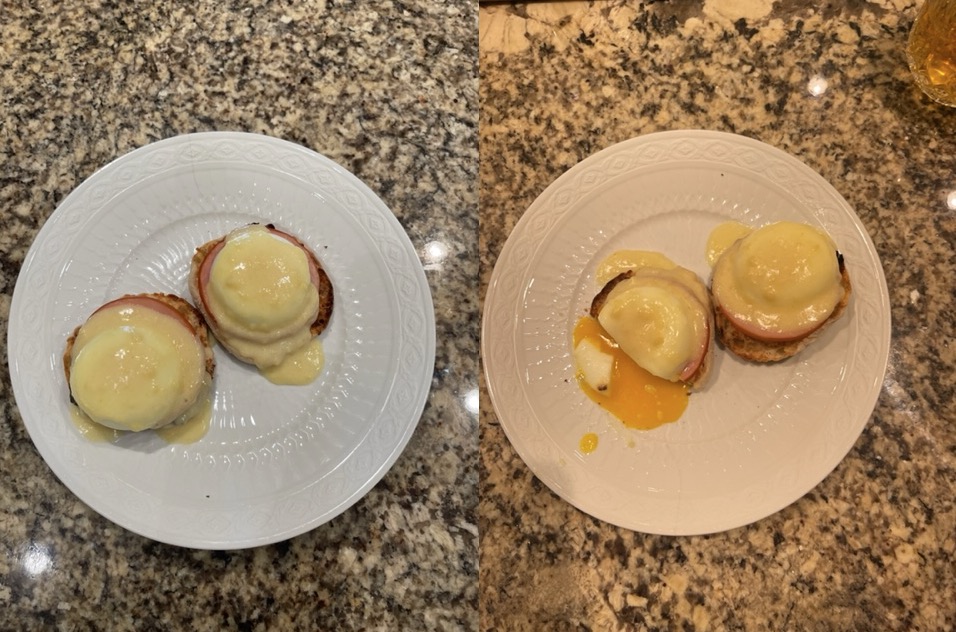
I use Knorr packets of Hollandaise to cut down on the cholesterol. Half a packet (12g) with a half cup of milk and a little butter is enough for four eggs.
A great device, recommended heartily.
And if you want the perfect egg in a shell, be sure to read this.
A beautiful place.
For our visit to Caltech we decided to live it up a little, staying at The Langham in Huntington, Pasadena.
When I last stayed there some two decades ago it was a Ritz Carlton. It may have changed hands but it remains a beautiful place to stay.
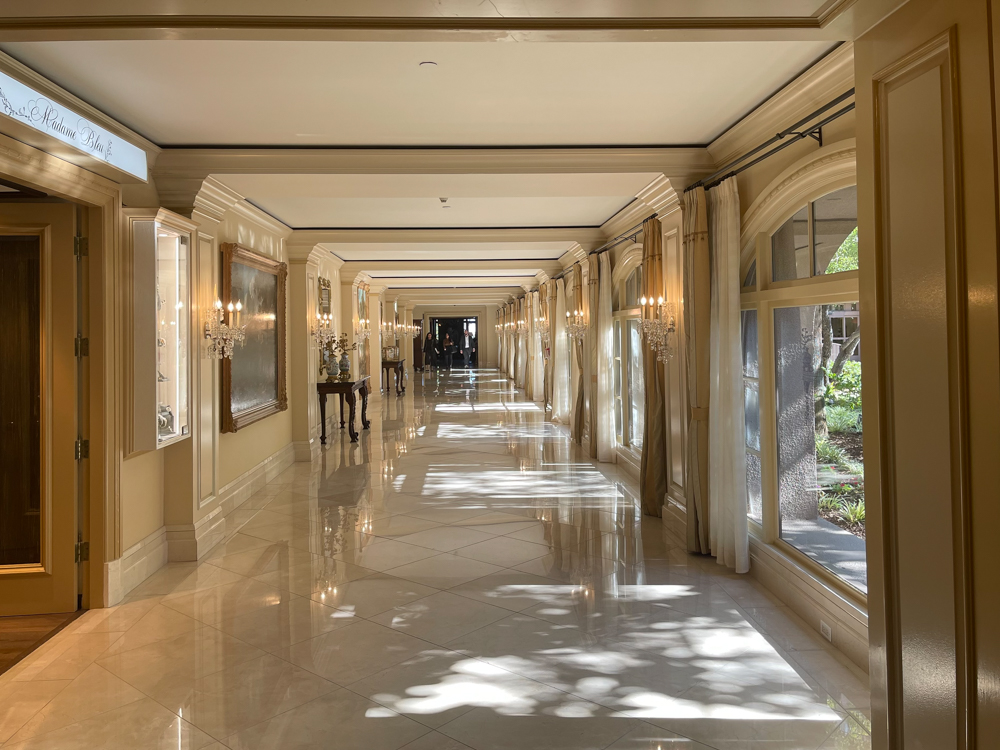

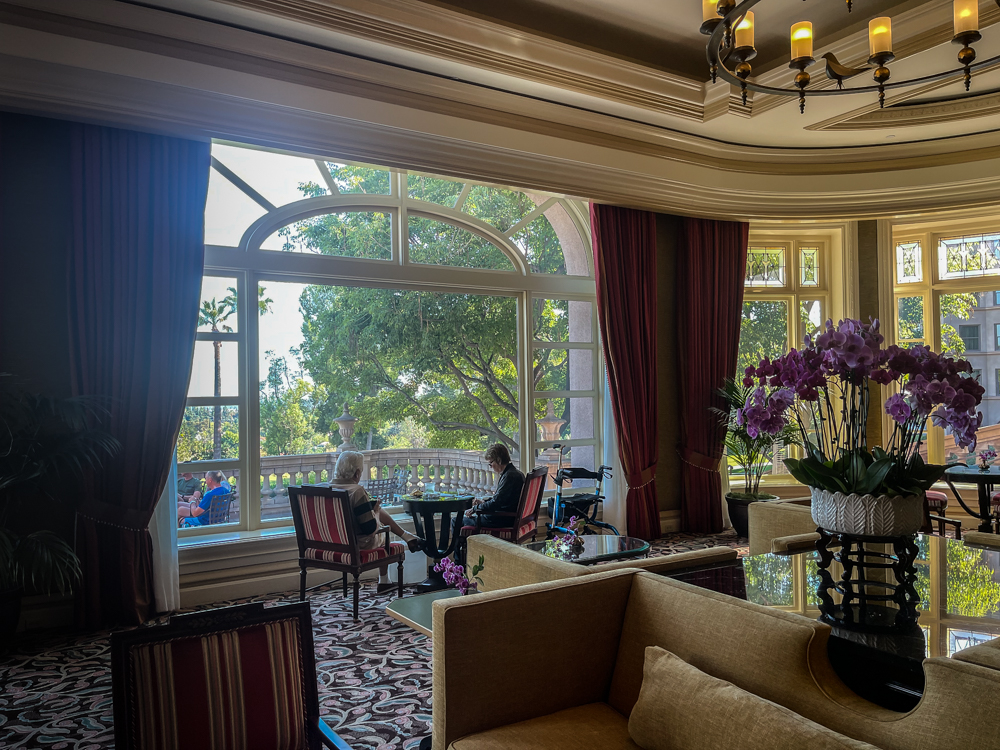
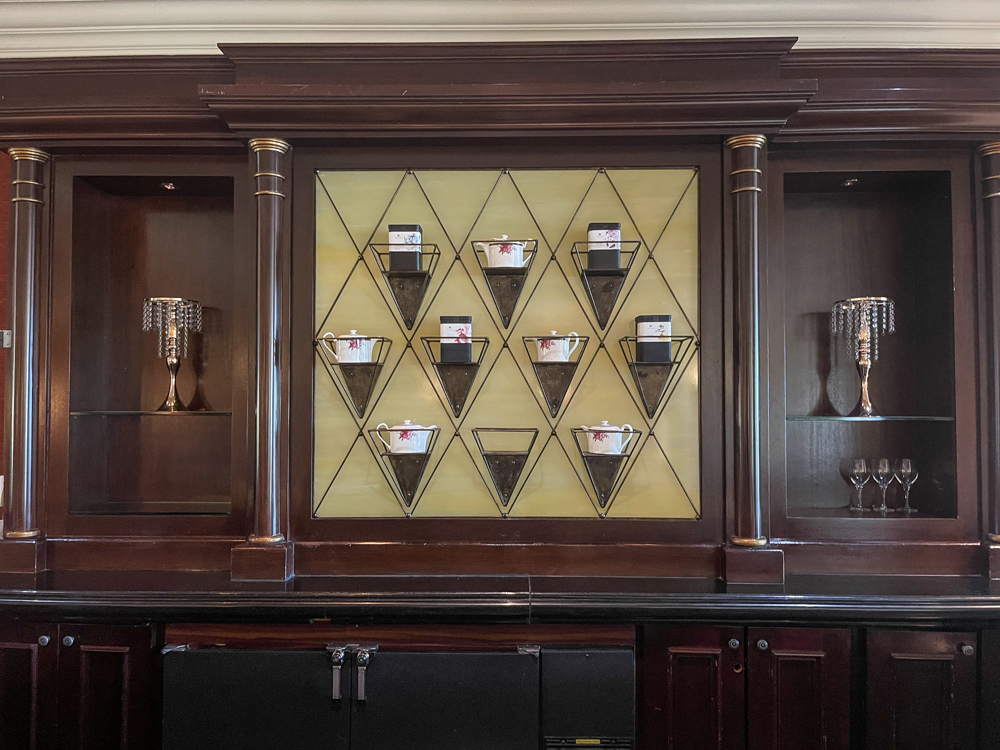
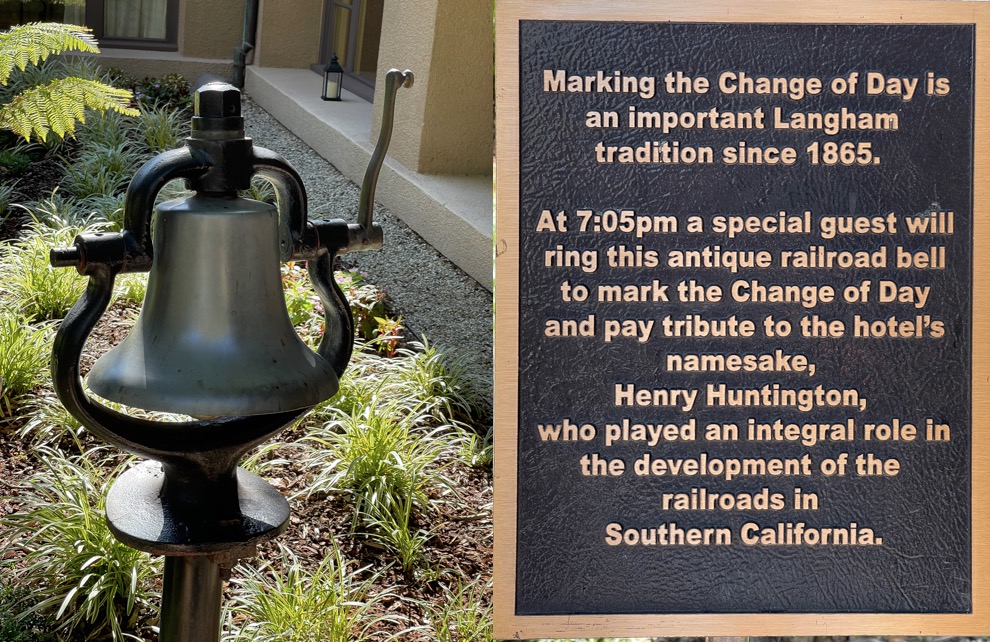
From Wikipedia:
The Huntington Hotel was originally named Hotel Wentworth when it opened on February 1, 1907. Financial problems and a disappointing first season forced it to close indefinitely. Henry Huntington purchased the Wentworth in 1911, renaming it the Huntington Hotel. It reopened in 1914, transformed into a winter resort. The 1920s were prosperous for the hotel, as Midwestern and Eastern entrepreneurs discovered California’s warm winter climate.
The hotel’s reputation for fine service began with long-time general manager and later owner Stephen W. Royce. By 1926, the hotel’s success prompted Royce to open the property year-round. The “golden years” ended with the stock market crash and the Great Depression of the late 1920s and early 1930s. By the end of the 1930s the hotel was vibrant again. When World War II began, all reservations were cancelled and the hotel was rented to the Army for $3,000 a month. Following the war, the Huntington’s fortunes improved again. In 1954 Stephen Royce sold the hotel to the Sheraton Corporation, serving as general manager until his retirement in 1969. The hotel operated until 1985, when it closed because of its inability to meet seismic standards. The structure was built of reinforced concrete in 1906.
After a 2 1/2-year major renovation, the hotel reopened in March 1991 as the Ritz Carlton Huntington Hotel and Spa. The hotel completed a $19 million renovation in January 2006; it changed hands in early 2007 and became Langham Brand International, Huntington Hotel & Spa.
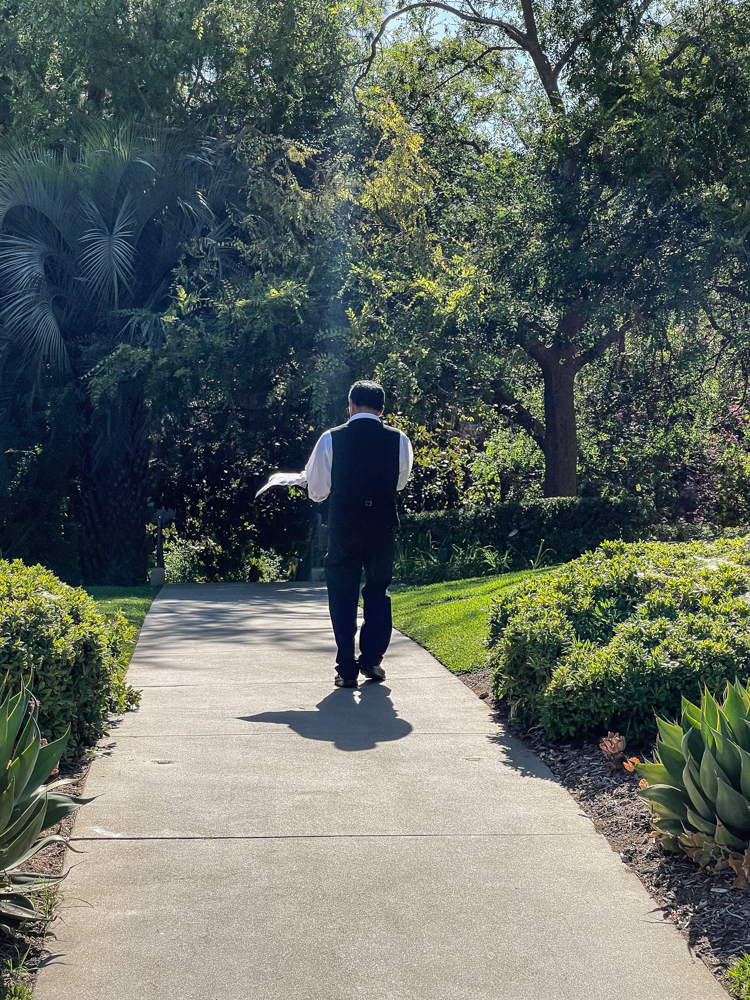
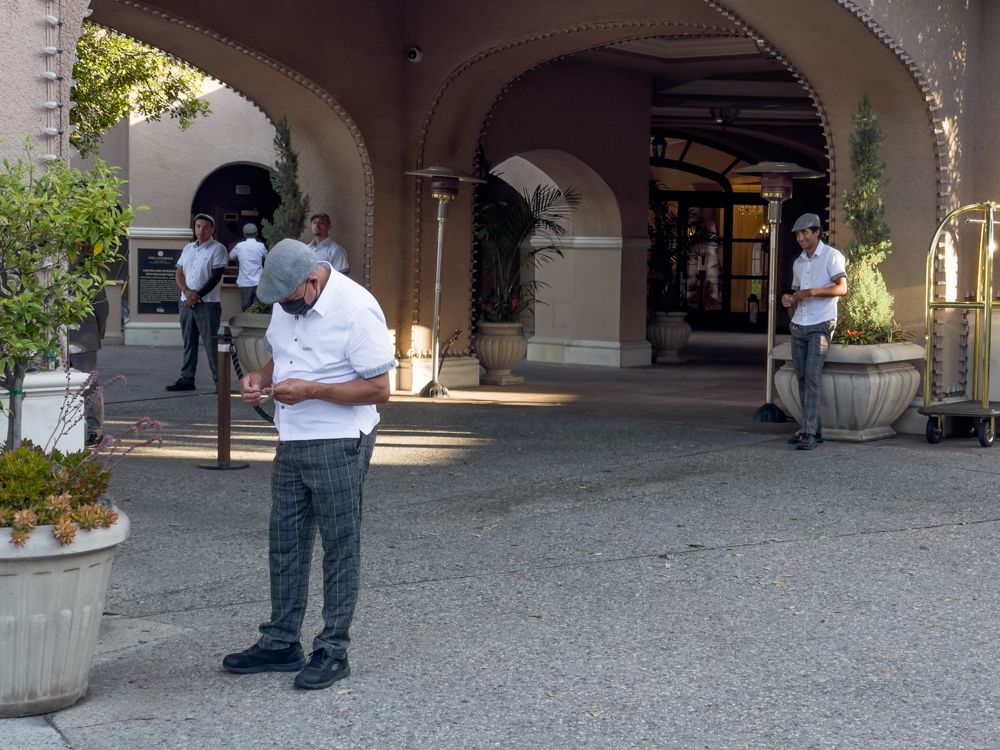
All snaps on the iPhone 12 Pro Max which does a splendid job of controlling dynamic range.
The best of the best.
For an alphabetical index of the New England College series of pieces, click here. OK, OK, so Caltech is not actually in New England ….
You would expect armies of white coated nerds running around on the way to clean rooms with multiple levels of security and AK armaments, wielded by 007 style villans, in what is arguably the greatest school of pure science and engineering on the planet. Far from it.
What you get is predominantly 1930s architecture housing some of the finest brains in the universe, all discreetly hidden away in largely unexceptional buildings. If Hollywood, just down the road, boasts of its accomplishments with glitz and bright lights, The California Institute of Technology keeps a very low profile by comparison.
Admission? Well, it’s largely fughedaboutit. You need a 4.0 GPA and 1600 on your SAT (well, used to, until SATs were suspended) just for your paperwork to make it through the door. And with Caltech closing in on 50 Nobel prizes in Chemistry and Physics (and one for the comically named ‘Peace’ prize) you can imagine this sort of brain power has been around quite a while, the first being awarded to Robert Millikan in 1923 for work on the photoelectric effect. Or something. (Millikan turned out to be a nut for eugenics, so is now persona non grata at the school. Not all Nobel prizes are created equal).
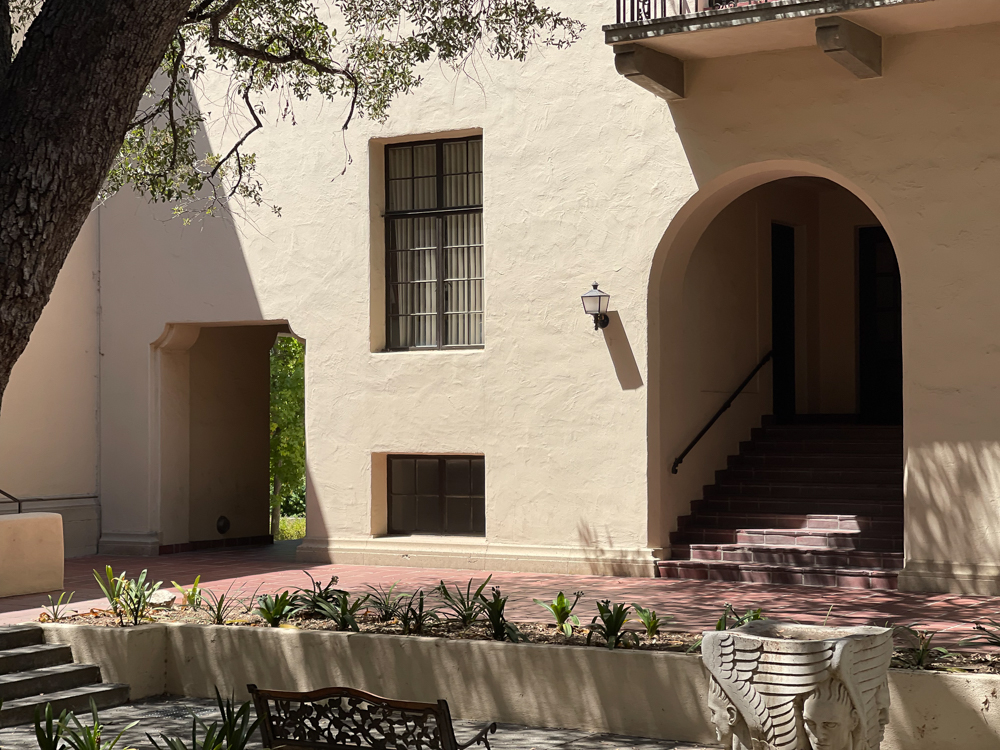
A lovely late summer day found my son Winston and I luxuriating in the dulcet tones of our guide, a long time friend who just happens to be a tenured professor at the school. I understood precisely 9.72% of what he said with my son maxing at some 31.45%. So follow up reading is strongly indicated and I now almost know what a polymerase chain reaction is. Or something.
Most science buildings at the great American schools flirt with ugly and if there’s the occasional outlier at Caltech it can be forgiven by the generally cohesive appearance of the campus. In this image my son, contemplating the complexities of gravitational waves, is following our tour guide. Those east coast losers at MIT actually also had something to do with these:
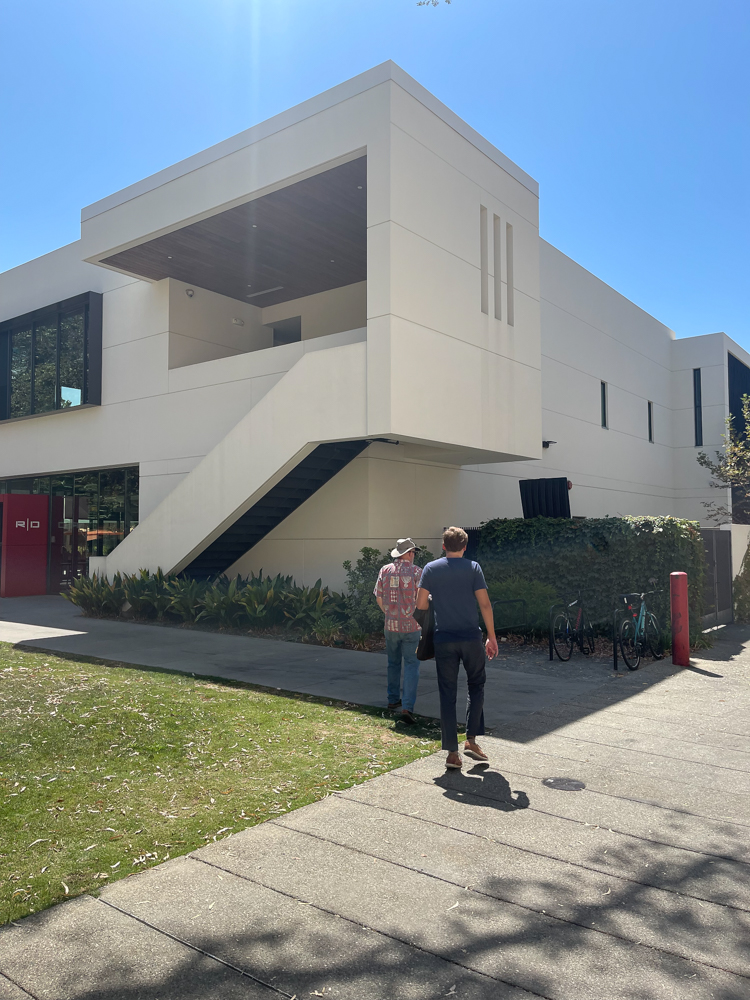
And everywhere our splendid guide took us saw magic going on. In one area there were screens documenting in real time tremors across the earth, the area of focus switchable at will. A glance at the adjacent map of seismically active areas confirmed that Caltech is actually doomed and that my Scottsdale, Arizona home will soon be beach property. Have a big quake anywhere and the film crews line up with their broadcast vans, plugging in to the provided receptacles to advise Hung So Low that, yes, his former shack in Beijing is now so much rubble. Ah, science.
Even geniuses with no social skills need solitude for relaxation and the beautiful grounds of the campus provide plenty of opportunities for that increasingly rare experience.
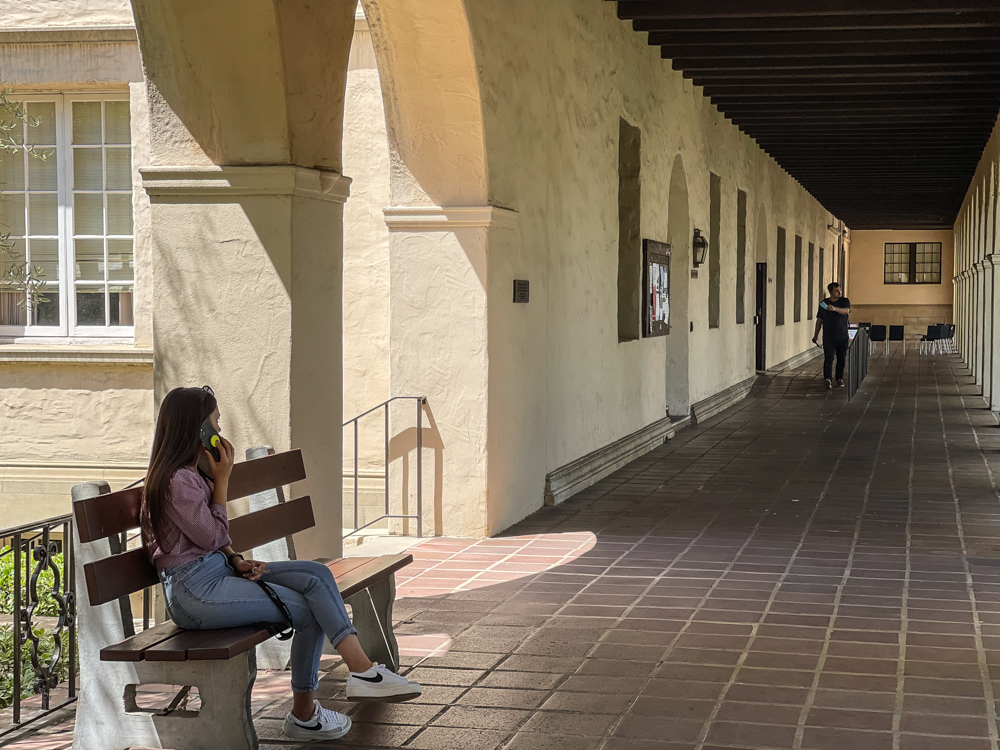
Reading rooms are, as you might expect, everywhere, and if the British walnut and oak model is any guide, Caltech has adopted its forbears’ tastes with aplomb.
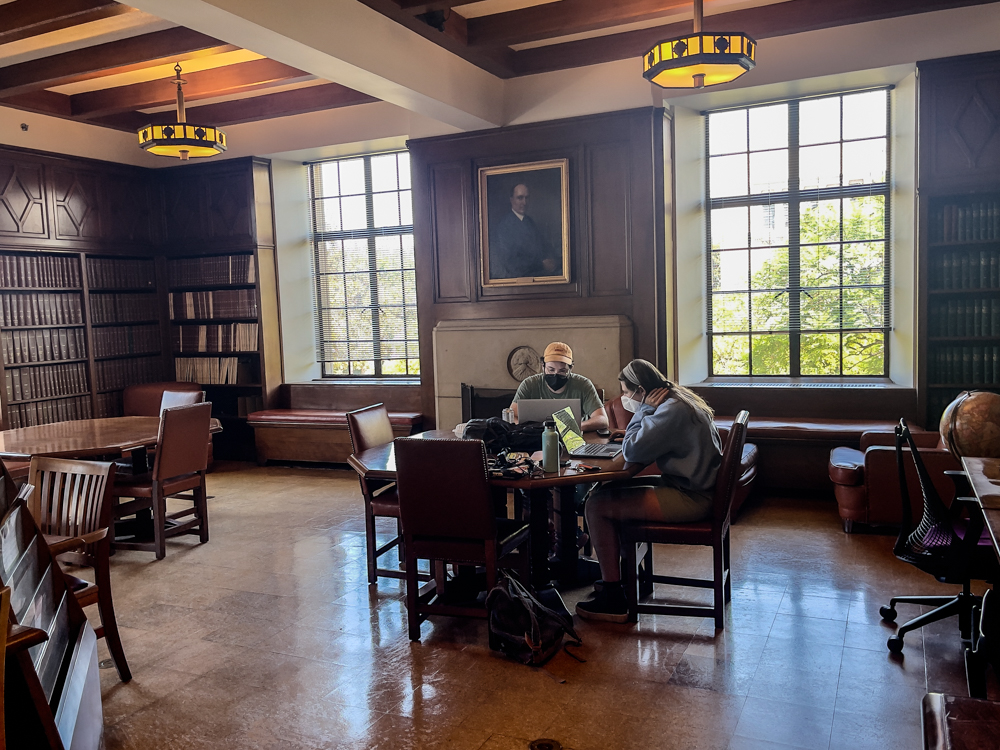
And everything is an experiment. This innocuous lily pond is actually used to demonstrate how methane is created by these plants with annual late night illustrations of the combustible power of the gas when ignited. As our guide told us, “Caltech students love to burn up things”. The campus provides for 900 undergraduate and 1400 doctoral students, and their aggregate IQ exceeds that of all but a small handful of nations. And there are so many faculty members that you cannot go a block without encountering a dozen. Add in a generous ‘prank’ budget and you have a combustible mix. Or something.
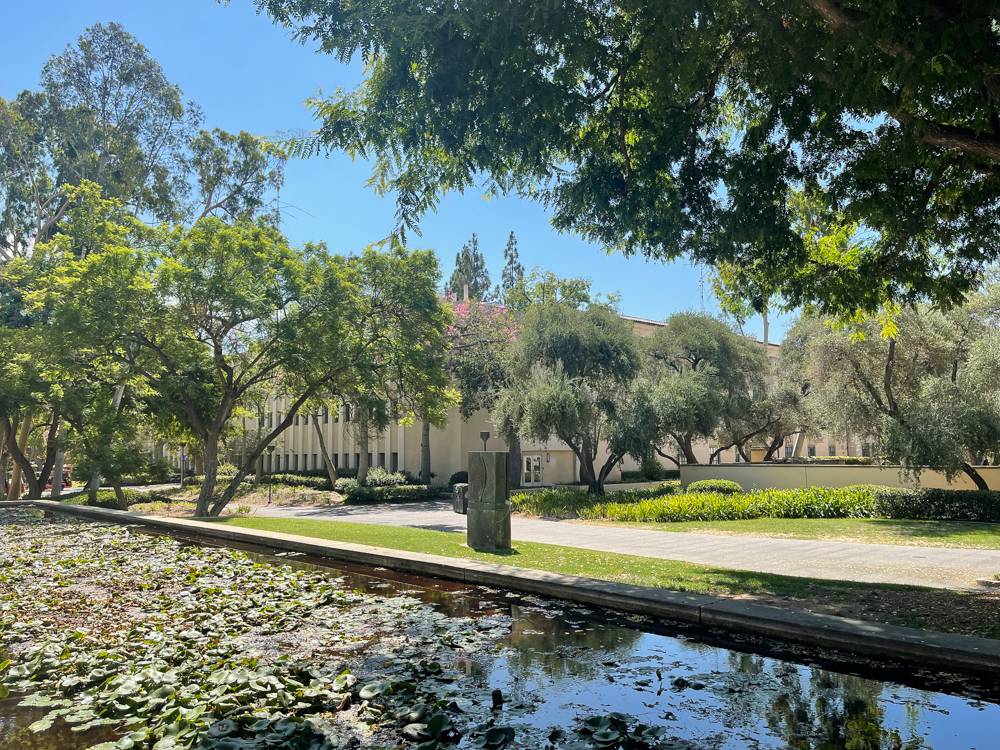
With an endowment of $4.6 billion for just 2300 students money is no object here and driving around it seems that the school owns most of the buildings in Pasadena. Come here as a visiting prof and you get splendid housing, perfect weather and the thrilling prospect of the Big One which will wipe everything out. Just avoid the freeways if you hate parking lots.
A beautiful place for your child genius.
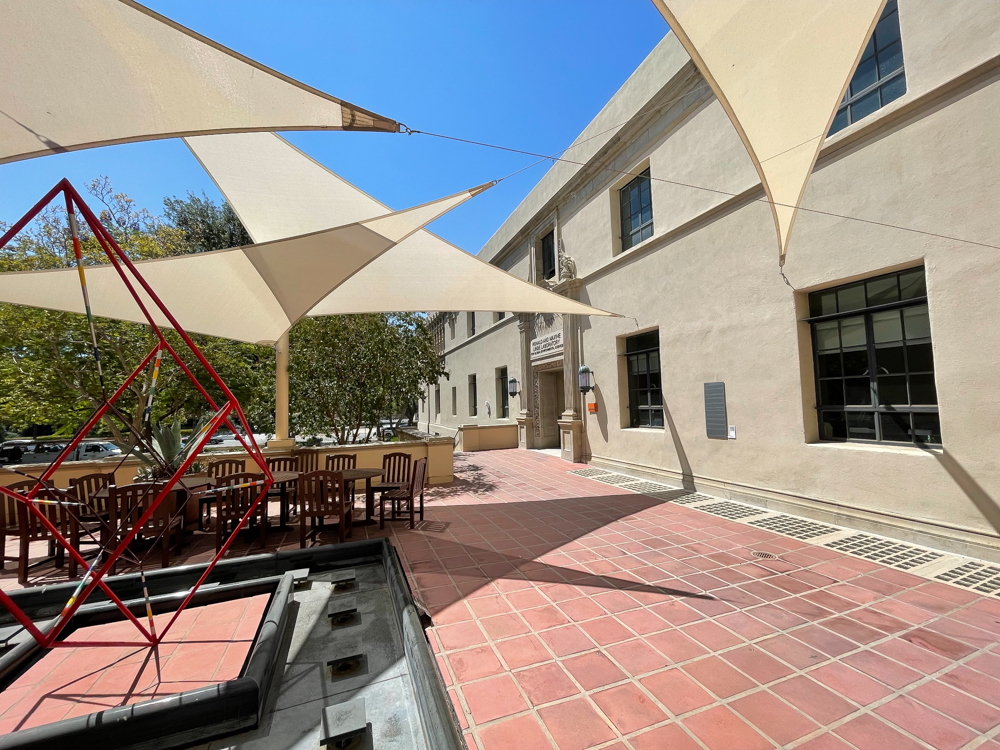
Images snapped using an iPhone 12 Pro Max, much of whose tech content probably originated here.